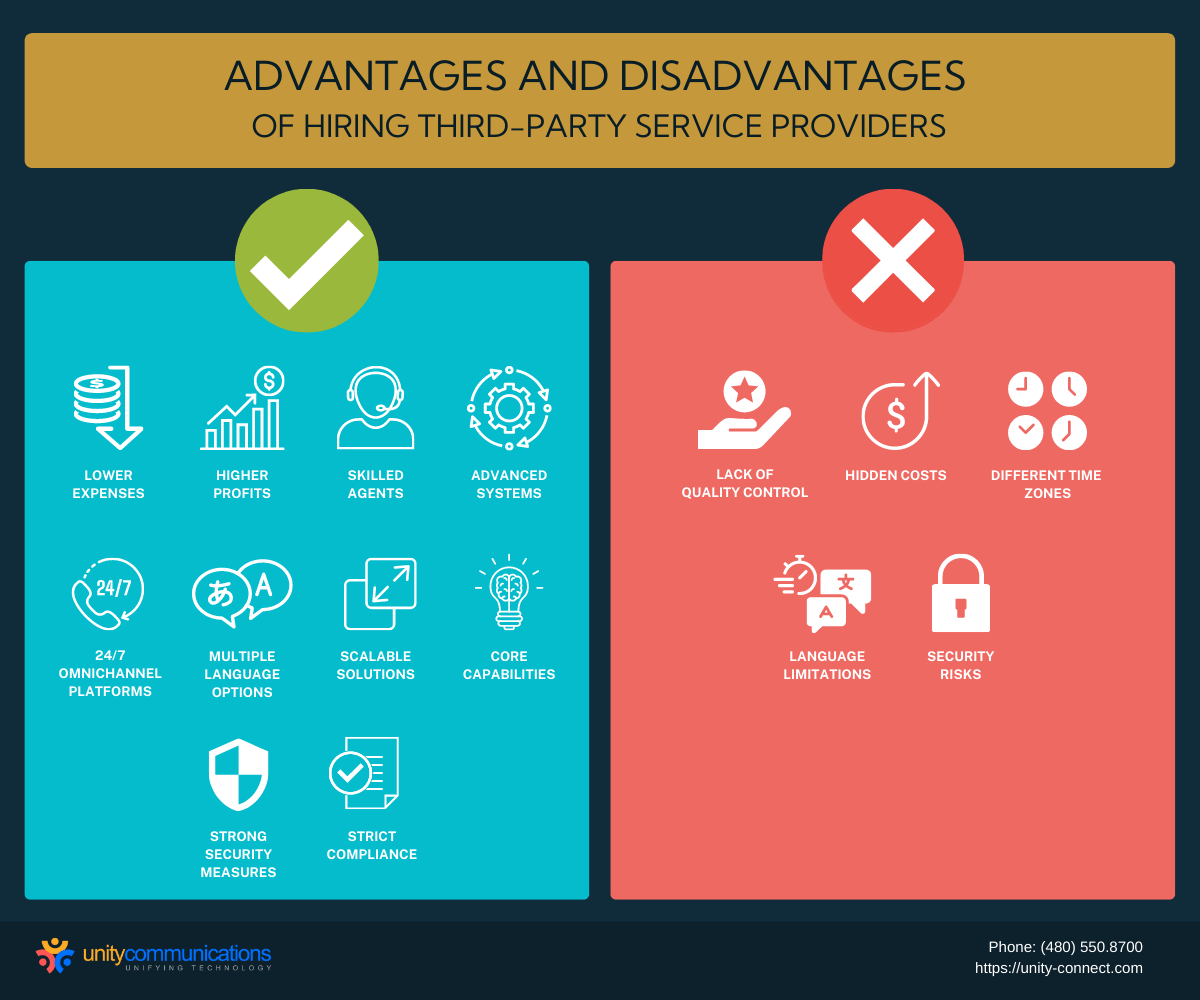Table of Contents
Covid-19 accelerated technology use in business, pushing companies to move quickly into greater use of advanced information technology (IT). It also created increasing rates of customer inquiries because of newer tech. Companies sometimes struggle to balance customer satisfaction and enterprise growth while coping with the competition, and the workforce crunch has added to the pressure companies are feeling.
Companies ready to scale up are now including outsourced technical support in their development strategy. The approach is cost-effective in accelerating customer service delivery and helping companies to expand.
Businesses need to learn the practical steps in tech support process outsourcing before committing to the process. Explore the five essential steps below to start outsourcing without a hitch.
1. Identify Challenges and Goals

IT and technology businesses looking to reduce costs and enhance productivity tap into third-party providers to handle customer tech inquiries. Tech support outsourcing enables these companies to focus on their core capabilities for continued growth.
According to Technavio, the global tech support outsourcing market might reach nearly $14 billion by 2026 at a 7.47% compound annual growth rate (CAGR) as the need for cost-effective solutions increases. The research organization notes that improving business efficiency drives the expansion of the third-party provider market.
Because the public health crisis has spurred digital transformation, customers need and want convenient and fast tech support. Many companies are meeting these expectations through business process outsourcing (BPO).
To thrive in the market, businesses must strategically assess their needs and set clear goals before outsourcing tech support. They should begin a systematic evaluation by identifying strengths, weaknesses, opportunities, and threats using the SWOT analysis model.
This framework provides a comprehensive overview of your business’ current status. It helps identify which core capabilities and available avenues you must prioritize to drive success. You’ll also discover which areas prevent your enterprise from expanding.
Answer these recommended questions to define your SWOT clearly.
- What makes your IT firm unique?
- Why do customers stay loyal to your brand?
- What value does your company offer?
- What prevents your business from expanding?
- What factors drive your customers away?
- Why can’t your company keep pace with the competition?
- How can you apply your strengths to achieve continued growth?
- Can you afford to purchase and deploy emerging technologies?
- How can you accommodate changing customer demands?
- How does outsourcing a task benefit your company?
- What internal or external factors cut into your bottom line?
- How could your weaknesses be exposed or exploited?
- How does hiring a third-party service provider affect your business?
If you can’t address or correct some of the internal limitations these questions might reveal, consider adopting front-office or back-office outsourcing. Specifically, examine whether tech support outsourcing can help you accelerate customer service and enhance efficiency. List measurable objectives to match your operational needs.
2. Screen Potential Contractors

After identifying your business needs, challenges, and goals, solicit proposals from potential tech support providers. Select at least three vendors capable of addressing gaps and your requirements.
Create criteria to compare their service packages and capabilities. Include the following factors in selecting the right BPO vendor.
- Market Reputation. Study a provider’s industry standing and track record for delivering tech support. Ensure it has a good background in engaging with customers and providing high-quality output. Seek referrals to understand and align its work ethics with yours.
- Workforce. Check whether a vendor has the best talent to provide superior 24/7 tech support. Make sure its employees can handle multiple customer inquiries quickly and effectively. Learn how it trains, manages, and compensates its workers to maintain their excellent performance.
- Technology. Evaluate a provider’s technology and infrastructure to streamline customer service without costing you extra dollars. Confirm whether it applies emerging solutions such as automation and cloud computing to speed up tech support. Also, verify what tools it uses to improve your collaboration, communication, and market analysis.
- Pricing. Compare a contractor’s service package with other bidders. Ensure its fixed or variable charges match your operational budget. Watch out for hidden fees to avoid paying more than agreed.
- Culture and Language. Consider language and cultural alignment to keep a successful partnership in the long run. This factor is crucial to avoid misunderstandings and conflicts.
- Scalability. Assess a provider’s ability to adapt to planned or sudden changes. Measure its capacity to deliver excellent tech support, especially during off and peak seasons.
- Transparency. Collaborate with a vendor capable of sharing all information vital to your service agreements. A transparent outsourcing partner is eager to exchange insights for continued business growth. It values trust and honesty when working together.
- Security and Compliance. Hire a BPO provider that strictly follows security and compliance policies. Ensure it has practical solutions for threat mitigation and risk management. It must also protect customer data privacy.
Based on these specifications, narrow your selection to a single bidder after comparing their proposals. You can also use these criteria to answer what an outsourced IT provider is if you’re planning to hire one.
3. Perform Cost Analysis
Before proceeding to tech support outsourcing, conduct a cost analysis to determine its potential impact on your IT company. This problem-solving approach helps add weight to your outsourcing investment decisions. It uses accounting data to balance your operational and BPO budget.
Calculate your possible outsourcing cost by:
- Specifying which process to outsource—tech support in this case
- Listing in-house expenses saved by outsourcing
- Computing overall BPO costs
- Identifying whether outsourcing generates savings and drives revenue
- Investing if outsourcing leads to cost reduction and increased profitability
4. Consolidate Agreement Terms and Conditions

Before signing a contract with your chosen provider, finalize the service agreement terms and conditions. Schedule a meeting where you can negotiate your administrative policies and procedures. Ensure the agreement benefits both parties.
Highlight transparency regarding data sharing, service pricing, and management rules. Establish a clear and concrete deal for exchanging all information relevant to your partnership. After all, having trust and confidence in each other helps produce measurable outcomes.
In addition, it emphasizes collective security and compliance rules to protect consumer data and avoid sanctions. Match your security measures against cybersecurity threats and efforts to adhere to industry standards. This action is also essential when you outsource data entry services.
5. Prepare Outsourcing Management Plan
Once you have finalized and signed an agreement for tech support process outsourcing, you must know how to manage your BPO provider. This step helps deliver an excellent customer experience as you prioritize your core competencies. It also addresses work failures and conflicts.
To ensure a long-term, healthy partnership with your contractor, follow these BPO management tips.
- Combine business objectives and action plans to attain quantifiable results
- Prepare for unexpected organizational changes to ensure smooth tech support delivery
- Maintain close communication to achieve successful work cooperation
- Build trust by openly sharing insights for constant improvement
- Host regular training to update business terms, policies, and procedures
- Hold calibration meetings to review quality assurance goals and scores
- Create and implement a practical escalation strategy to resolve complex customer service problems
Impacts of Tech Support Process Outsourcing

When you contract back-office outsourcing services, you need a guide to guarantee returns on your BPO investment. The same goes for outsourcing your front-office tasks, such as tech support. Best practices help you make smart decisions when entrusting tech support to BPO providers.
To further understand how effective outsourcing tech support is, here are the advantages and disadvantages of hiring third-party service providers.
Advantages
- Lower Expenses. Outsourcing tech support removes the need to separately invest in establishing an in-house team and buy advanced tech support for customer service personnel. Vendors already have a skilled workforce and advanced technology to support customers efficiently. You can pay a fixed service charge or a variable fee, depending on your needs.
- Higher Profits. Although only indirectly, tech support outsourcing can help increase your revenue. Contractors’ ability to provide a superb customer experience attracts more consumers to purchase your offerings. As your customer base expands, expect your profits to increase gradually.
- Skilled Agents. Although tech support is part of your non-core tasks, the function remains a primary service offering for BPO providers. They thus focus on employing experienced and well-trained tech support agents. Anticipate working with these employees when investing in tech support process outsourcing.
- Advanced Systems. In addition to a certified workforce, vendors use modern technology such as robotic process automation (RPA) and cloud computing to accelerate tech support. They also use advanced tools to collect market insights and inform improvement. Optimize these resources when outsourcing tech support.
- 24/7 Omnichannel Platforms. Contractors can deliver round-the-clock tech support using different communication channels. Their agents can respond to IT inquiries fast via phone calls, email, and live chat. They also offer immediate tech assistance through social media—customers’ top preference for brand communications.
- Multiple Language Options. BPO helps address communication barriers when your business operates globally. Providers distribute their agents among teams that speak a specific language to personalize customer service. They also ensure their workers are fluent in English to accommodate the general public.
- Scalable Solutions. Adapting to immediate changes in business structures is one of BPO contractors’ strengths. They can adjust their operations to meet increasing customer demands, especially during off and peak season. They have unique problem-solving strategies to handle pressure without compromising output quality.
- Core Capabilities. Entrusting your time-consuming tech support to a third-party service provider lets you focus on enhancing your core capabilities. You can use your outsourcing partner’s collected customer feedback to improve products and services. You can also refine your strategy to thrive in the competition.
- Strong Security Measures. Because tech support involves massive data, contractors follow strict security guidelines. They also implement sophisticated security software to protect consumer information and privacy. Therefore, you can trust them to safeguard your customer data without spending extra dollars.
- Strict Compliance. Providers ensure their operations adhere to stringent industry, national, and international standards. They strive to achieve full compliance to maintain their clients’ trust. You can also avoid paying violation fees and sanctions if your outsourcing partner obeys rules and regulations appropriately.
Disadvantages
- A Lack of Quality Control. You might be unable to track your service provider’s performance because you focus on growth-driven initiatives. If you don’t establish a good connection with your outsourcing partner, the work you delegate might be of low quality. This move can result in unsatisfied customers.
- Hidden Costs. Tech support outsourcing providers offer fixed and variable service charges. But when you choose offshore BPO, you might overlook hidden costs such as currency conversions, taxes, and value fluctuations. You might pay more than your agreed charges.
- Different Time Zones. Different business hours due to varied time zones limit communication when you hire a non-U.S. tech support provider. You might struggle to hold regular meetings and other appointments if not discussed beforehand. Sometimes this factor results in project delays and conflicting management rules.
- Language Limitations. Working with a contractor operating offshore might create inefficiencies because of language barriers. Foreign agents might struggle to comprehend more idiomatic English despite speaking the language fluently. This difficulty can lead to dissatisfied customers.
- Security Risks. When you outsource data entry, your information can be vulnerable to cyberattacks. As such, tech support process outsourcing involving sensitive data sharing can face hacking risks and privacy issues. You might spend more money if you disregard varying security rules and regulations.
The Bottom Line
IT and technology firms experience backlogged customer inquiries as technology demands have increased during the public health crisis. Limited resources and time constraints hinder them from boosting enterprise growth and improving core functions. Hence, they tap into BPO vendors to handle repetitive, labor-intensive tech support.
But remember that every project investment has benefits and drawbacks to consider. You just need to ensure positive outcomes will outweigh negative ones. You can follow best practices for outsourcing your tech support.
If you’re looking for the right third-party service provider, contact Unity Communications now for superior tech support. Expect a complete turn-key experience that includes 24/7 help desk availability, highly trained tech support personnel, and high-tech infrastructure when working with the Inc. 5000 company.




